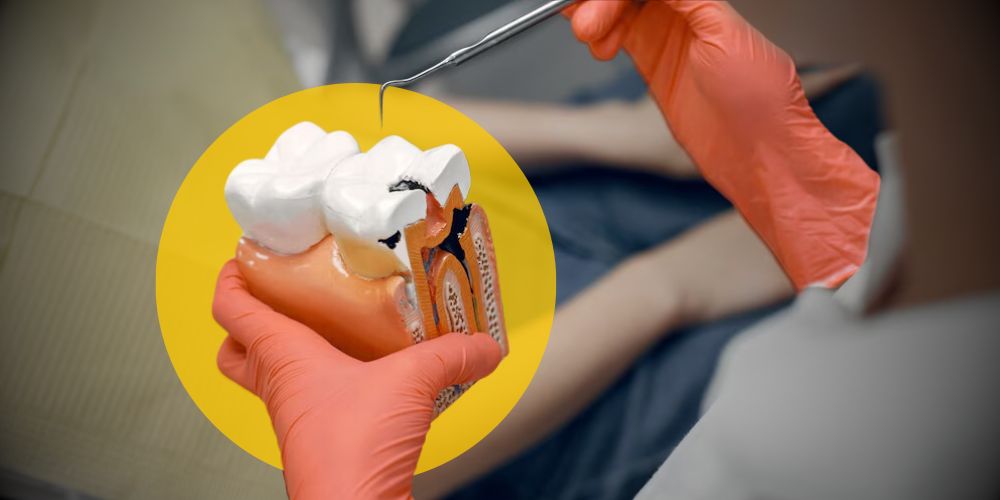Most of us neglect a small cavity identified by the dentist and then decide to postpone, believing it could wait. That's where root canal treatment is required several months later because the cavity progressed, resulting in significant tooth pain that severely affects our sleep.

Root canal treatment is typically recommended by a dentist when an infection in a tooth has spread to its innermost layer, known as the pulp.
This infection is often the cause of tooth pain, as the pulp has nerves and blood vessels that send signals about the infection.
Your dentist will first examine the tooth and take X-rays to determine the extent of the problem.
To ensure your comfort during the procedure, the area around the tooth will be numbed with a local anesthetic.
A colored elastic sheet, known as a dental dam, is used to keep tooth clean, dry, and free of saliva throughout the procedure.
The dentist will create an access point in the tooth's crown to reach the pulp chamber, which contains the nerves and blood vessels.
Utilizing specialized instruments, the infected or inflamed pulp tissue is carefully removed.
The root canals are properly cleaned and disinfected to remove any remaining bacteria and debris.
The entire cleaned root canals are filled with a biocompatible material, gutta-percha, which is a rubber-like substance.
The tooth is sealed with a white colored material to prevent bacteria from entering.
After the tooth has healed, a dental crown is placed to restore its function and protect it.
Re-root canal treatment is essentially a second chance to save your tooth when the initial root canal doesn't heal as expected.
A root canal helps to clean out infected tissue from inside the tooth, seal it up, and prevent further issues. But sometimes, things don't go as planned. Here's why a tooth might need retreatment:
Missed Canals – Some teeth have tiny, extra root canals that were missed in the first treatment, allowing bacteria to persist.
Improper Cleaning or Sealing – If bacteria weren't fully removed or if the filling didn't completely seal the canal, reinfection can occur.
A Cracked or Leaking Crown – A poorly fitting or delayed crown can allow bacteria to sneak back in.
Re-root canal treatment is far more precise and predictable with a dental operating microscope (DOM). Here's how it makes a difference:
1. Enhanced Visibility: A microscope magnifies the tooth up to 25 times, allowing the dentist to spot tiny canals or fractures that would be impossible to see with the naked eye.
2. More Thorough Cleaning: With clear vision, pulp's all canals can be located and disinfected properly.
3. Higher Success Rate: The ability to see and remove stubborn bacteria or old filling materials increases the chances of long-term healing.
If you are suffering with sharp tooth pain, don't panic—root canal treatment is an option. With advancements like the dental microscope, the chances of saving your tooth are better than ever. Instead of rushing to extract it, Schedule an appointment with us at Smile Masters and Jaw Joint Matters in Bandra West, Mumbai, for a painless root canal treatment.
Root canal treatment has become painless with modern dentistry. The complete process takes place under local anesthesia to make you feel comfortable.
After a root canal, wait one hour before drinking water to allow the material to set. Also, avoid sticky and hard foods until the crown is placed.
Following are the factors that define the cost of root canal treatment:
For exact root canal treatment cost in Bandra West, Mumbai, book an appointment with Dr. Moez at Smile Masters and Jaw Joint Matters.